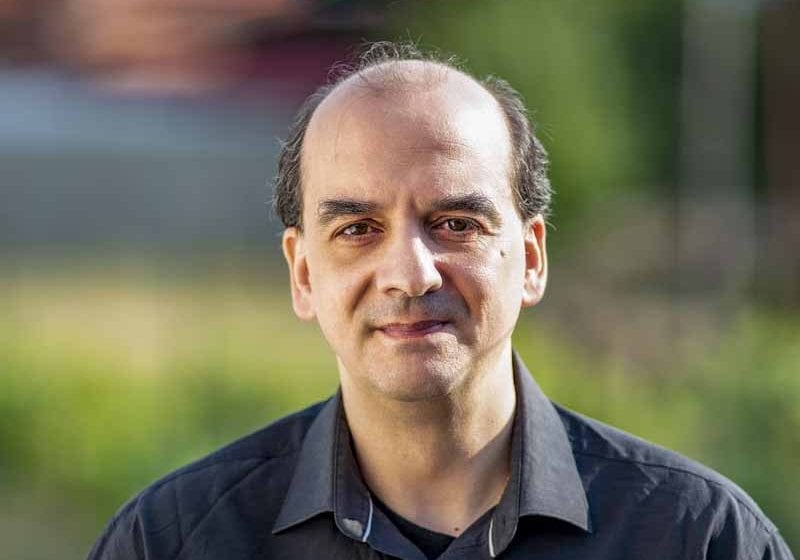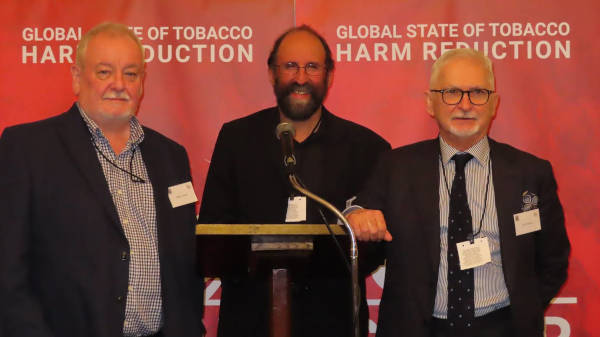The sudden outbreak of lung illnesses and deaths have made headline news. But painting these adverse events as “vaping-related” is vague and inaccurate.
By Maria Verven
The headlines would make anyone swear off of vaping forever. A sudden rash of “vaping-related” illnesses and deaths—12 as of this writing—has made the front pages of almost every major news outlet.
But get past the headlines and you’ll find that these adverse events are not related to vaping legal e-cigarette products. The overwhelming majority of cases have been tied to vaping cartridges containing THC wax or oils. And most were purchased illegally on the black market.
Saying someone died from “vaping” is akin to saying someone died from “drinking” without specifying that they accidentally drank something poisonous.
In short, news stories that blame deaths on vaping are painting the story with an extremely large brush way outside the lines of reason.
Just apply the laws of epidemiology
Konstantinos Farsalinos, a cardiologist, clinical researcher and expert on e-cigarettes, says we need only apply the simple rules of epidemiology to understand the recent turn of events.
E-cigarettes have been on the global market for more than 10 years. Today, approximately 11 million people in the U.S. and millions more worldwide vape regularly. The typical adult vaper in the U.S. is around 40 years old, and many have been vaping daily for several years.
Up until this summer, no reports of respiratory diseases or deaths were reported anywhere in the world.
Then suddenly, we witness hundreds of acute cases but only in the U.S. and primarily among young adults—and all bearing a remarkable resemblance.
It absolutely defies the laws of epidemiology that these cases could be related to the long-term use of e-cigarettes that have been on the market for years, used by millions of consumers, according to Farsalinos.
Applying simple logic, he explained that these cases are not indicative of a disease related to vaping but rather poisoning from either a new product, a new raw ingredient or a new practice in the manufacturing process. Only this explains the timing of the outbreak, he says.
Indeed, all signs are pointing to an emulsifier called vitamin E acetate, a product that hasn’t been used in store-bought e-liquids.
“The emotional, irrational hysteria against e-cigarettes needs to stop as soon as possible,” Farsalinos said. “Yet I wonder if the passionate statements made by the media, scientists and authorities will ever be corrected once the exact cause of this outbreak has been firmly established?”
So what exactly is vitamin E acetate?
Found naturally in foods such as olive oil and almonds, vitamin E sounds completely innocuous as does the oil, vitamin E acetate, that’s derived from it. Vitamin E acetate is commonly used in skin creams and as a nutritional supplement—but ingesting it is far different than inhaling it. Its oil-like property could well account for the types of respiratory issues—shortness of breath, chest pain, etc.—reported by sickened patients.
After noting that the majority of the bootleg THC cartridges patients used tested positive for vitamin E acetate, the U.S. Food and Drug Administration (FDA) and Centers for Disease Control and Prevention (CDC) launched a full-scale investigation.
New York Governor Andrew Cuomo also served subpoenas to three companies that sell thickening agents containing vitamin E acetate, ordering them to help with the FDA investigation.
Notably, the FDA told New York state officials that its lab tests found nothing unusual in the nicotine products it collected from sick patients. While some victims maintained that they only vaped nicotine products, it only stands to reason that patients in states where cannabis is not yet legal may not readily admit using illegally purchased THC vape cartridges.
The three companies at the heart of the investigation are Mass Terpenes, a Massachusetts-based company that sells Pure Diluent; Honey Cut, a California-based company that sells Honey Cut Diluting Agent; and Floraplex Terpenes, a Michigan-based manufacturer that sells Uber Thick. All three companies quickly removed their products from the market. The Honey Cut website is now gone while the website for Mass Terpenes has this notice on its front page:
“We are alarmed by recent reports linking vape ingredients containing vitamin E acetate to serious lung problems of consumers …. We have never sold a product without assurances of safety from the leading terpene suppliers and have taken steps to ensure that absolutely NO products on this site contain vitamin E acetate.”
The FDA has said it’s too soon in the investigation to determine whether vitamin E acetate is the sole culprit behind these events. “No one substance, including vitamin E acetate, has been identified in all of the samples tested. Importantly, identifying any compounds that are present in the samples will be one piece of the puzzle but will not necessarily answer questions about causality,” said an FDA spokesperson.
Yet we are clearly learning about the health risks of inhaling vitamin E acetate—at the very least, it appears to cause lipoid pneumonitis, which results from inhaling fat particles into the lungs. Chest pain, coughing and difficulty breathing were among the symptoms that were reported by patients who said they’d recently used black market THC cartridges.
In fact, safety instructions for vitamin E acetate specifically advise suppliers to avoid marketing vitamin E acetate for anything other than topical use, warning users to “keep away from heat and sources of ignition” and to “not ingest/do not breathe gas/fumes/vapor/spray.”
Aaron Riley, CEO at CannaSafe, the largest cannabis testing laboratory in California, says odorless, tasteless diluting agents such as Honey Cut are commonly used in the majority of black market vapes as a way to thicken vape oil and make it look more legitimate. “It looks like cannabis oil. It has the same color; it’s odorless. It was considered the best cutting agent,” he told Rolling Stone.
Protection is simple: Don’t buy THC vape juice illegally
The FDA’s public statement cautions consumers against buying “street” products: “Since consumers cannot be sure whether any THC vaping products may contain vitamin E acetate, consumers are urged to avoid buying vaping products on the street and to refrain from using THC oil or modifying/adding any substances to products purchased in stores.”
The best way to protect yourself from unsafe THC products is to purchase products from licensed dispensaries, Riley advised. “Dispensaries have a responsibility to protect consumer safety. If you’re not going in a dispensary, then the product you’re buying is not legitimate.”
“These unfortunate incidents reinforce the need for greater regulation, standardization and oversight of the cannabis market—principles which NORML has consistently called for in the cannabis space,” said NORML deputy director Paul Armentano in a prepared statement. “Consumers must be aware that quality control testing is critical and only exists in the legally regulated marketplace.”
Unfortunately, we may only be seeing the tip of this iceberg since purchasing illicit THC products is common in states where cannabis is illegal. Yet the legal cannabis industry may only account for a small portion (some estimate 22 percent) of the nation’s $52 billion cannabis market. Do the math, and 78 percent of the cannabis products are coming from a completely unregulated supply chain where profits rule the game.
The cannabis site Leafly estimates that as many as 50 million tainted carts may currently be circulating in the U.S. These carts likely originated in Shenzhen, China, where most carts are produced and where millions of people work long hours but rarely, if ever, partake in the products they make. And then these products are shipped in large pallets to Los Angeles, California, and Long Beach, California, where they quickly find their way into the illicit cart market.
Until this year, the health effects of street-purchased vape cartridges went largely unnoticed. It’s not clear whether that’s because doctors didn’t spot earlier vaping-related lung irregularities or if something dramatically changed in the vape oil itself in the past few months. All we know is that somehow, within the last year, a new additive entered the street THC vape cart supply.
Hysteria and overreactions
The sudden surge in cases prompted the CDC to activate its emergency operations center, which allows the CDC to assign additional staff and resources to aid in the investigation.
“[The] CDC has made it a priority to find out what is causing this outbreak of e-cigarette or vaping-related injuries and deaths,” Robert Redfield, the CDC’s director, said in a statement.
Meanwhile, the CDC also issued a broader advisory against using e-cigarettes and vapor devices, especially those “bought off the street,” implicating both nicotine and THC products.
Yet according to Michael Siegel, a Boston University School of Public Health professor who has 32 years’ experience in tobacco control including two years at the CDC’s Office on Smoking and Health, the CDC has irresponsibly botched its investigation of these vaping-related illnesses and deaths.
By continuing to state that they have no idea what’s causing this “mystery illness” and that “no single product” explains all of the cases, the CDC has confused policy makers and the public while putting the entire nation at risk, Siegel wrote on his blog, The rest of the story. These statements violate basic principles of epidemiological outbreak investigations, he said.
“Like all outbreak investigations, [this epidemic] is going to be solved by identifying a type of product that is common to an overwhelming majority of patients,” Siegel wrote. “Frankly, we already have that, and it’s called marijuana. There is just far too high a proportion of case patients who have admitted to using THC or CBD oils for this to be merely a coincidence.”
By demanding that clinicians test patients’ urine for evidence of THC, the CDC would easily be able to issue appropriate recommendations to the public that would curtail this epidemic of life-threatening respiratory failure.
Indeed, without knowing the true source of this outbreak, policymakers are moving to ban large segments of the e-cigarette market. The Trump administration announced plans to ban nontobacco-flavored e-cigarettes. Michigan was the first state to prohibit sales of most flavored e-cigarettes in its effort to curb underage vaping. And the governors of California and New York also recently announced emergency plans to ban the sale of flavored e-cigarettes.
“We know that nicotine vaping products are far less hazardous than smoking,” said Greg Conley, the American Vaping Association president. “Even the FDA notes that they can be very helpful and a great benefit to [the] public health of adult smokers who switch [from combustible cigarettes to vapor products]. Going straight to prohibition is a bad idea.”
“The most popular flavors among adult switchers are not tobacco or menthol. It’s fruit and sweet flavors. So Governor Cuomo is actually banning the most successful products at getting smokers off of cigarettes,” Conley said. “We need to keep these products available to smokers so they can use them to quit.”
“The CDC itself admits that about 80 percent of the outbreak patients admit to using THC oils. My count puts that figure closer to 90 percent. Apparently, it’s 100 percent before the CDC takes the appropriate actions and enables health authorities to put an end to the tremendous morbidity and mortality this outbreak is causing,” said Siegel.
“This is like reporting deaths from eating romaine lettuce and advising people to immediately stop eating all lettuce and cabbage—except it’s a lot worse because [there is] no harm when people stop eating cabbage.
“Severe harm is already resulting from ex-smokers stopping vaping and returning to smoking or to the black market,” he said.
Hysteria and overreactions
The sudden surge in cases prompted the CDC to activate its emergency operations center, which allows the CDC to assign additional staff and resources to aid in the investigation.
“[The] CDC has made it a priority to find out what is causing this outbreak of e-cigarette or vaping-related injuries and deaths,” Robert Redfield, the CDC’s director, said in a statement.
Meanwhile, the CDC also issued a broader advisory against using e-cigarettes and vapor devices, especially those “bought off the street,” implicating both nicotine and THC products.
Yet according to Michael Siegel, a Boston University School of Public Health professor who has 32 years’ experience in tobacco control including two years at the CDC’s Office on Smoking and Health, the CDC has irresponsibly botched its investigation of these vaping-related illnesses and deaths.
By continuing to state that they have no idea what’s causing this “mystery illness” and that “no single product” explains all of the cases, the CDC has confused policy makers and the public while putting the entire nation at risk, Siegel wrote on his blog, The rest of the story. These statements violate basic principles of epidemiological outbreak investigations, he said.
“Like all outbreak investigations, [this epidemic] is going to be solved by identifying a type of product that is common to an overwhelming majority of patients,” Siegel wrote. “Frankly, we already have that, and it’s called marijuana. There is just far too high a proportion of case patients who have admitted to using THC or CBD oils for this to be merely a coincidence.”
By demanding that clinicians test patients’ urine for evidence of THC, the CDC would easily be able to issue appropriate recommendations to the public that would curtail this epidemic of life-threatening respiratory failure.
Indeed, without knowing the true source of this outbreak, policymakers are moving to ban large segments of the e-cigarette market. The Trump administration announced plans to ban nontobacco-flavored e-cigarettes. Michigan was the first state to prohibit sales of most flavored e-cigarettes in its effort to curb underage vaping. And the governors of California and New York also recently announced emergency plans to ban the sale of flavored e-cigarettes.
“We know that nicotine vaping products are far less hazardous than smoking,” said Greg Conley, the American Vaping Association president. “Even the FDA notes that they can be very helpful and a great benefit to [the] public health of adult smokers who switch [from combustible cigarettes to vapor products]. Going straight to prohibition is a bad idea.”
“The most popular flavors among adult switchers are not tobacco or menthol. It’s fruit and sweet flavors. So Governor Cuomo is actually banning the most successful products at getting smokers off of cigarettes,” Conley said. “We need to keep these products available to smokers so they can use them to quit.”
“The CDC itself admits that about 80 percent of the outbreak patients admit to using THC oils. My count puts that figure closer to 90 percent. Apparently, it’s 100 percent before the CDC takes the appropriate actions and enables health authorities to put an end to the tremendous morbidity and mortality this outbreak is causing,” said Siegel.
“This is like reporting deaths from eating romaine lettuce and advising people to immediately stop eating all lettuce and cabbage—except it’s a lot worse because [there is] no harm when people stop eating cabbage.
“Severe harm is already resulting from ex-smokers stopping vaping and returning to smoking or to the black market,” he said.









